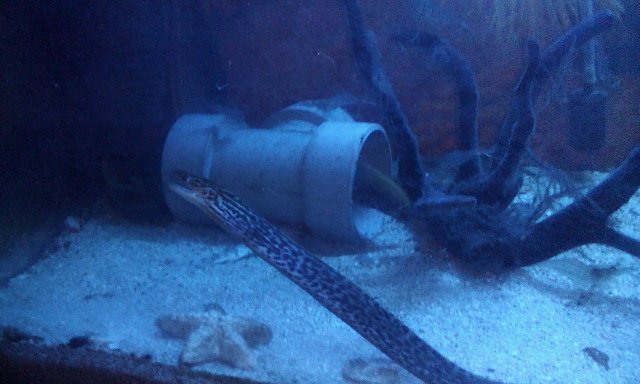Thank you 88fish and TheLastKon for the beautiful pictures of my favorite moray, Gymnothorax Polyuranodon. I am still in the process of trying to buy one of those from my friend in Indonesia, who keeps several of them in freshwater, together with some stingrays. Here is a video of his aquarium:
Currently I am keeping a nice cute Echidna Rhodochilus (white-cheeked moray) a smaller cousin of Polyuranodon, which won't grow bigger than 35 centimeters. I hope it will get along fine with a fellow moray (albeit from a different species) once I get my hands on a Polyuranodon.
Currently I am keeping a nice cute Echidna Rhodochilus (white-cheeked moray) a smaller cousin of Polyuranodon, which won't grow bigger than 35 centimeters. I hope it will get along fine with a fellow moray (albeit from a different species) once I get my hands on a Polyuranodon.




